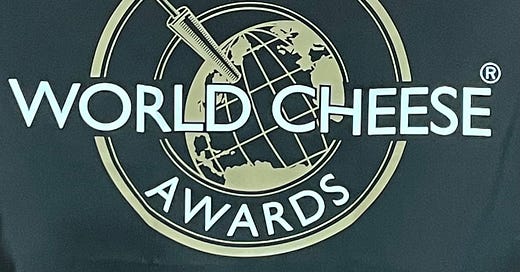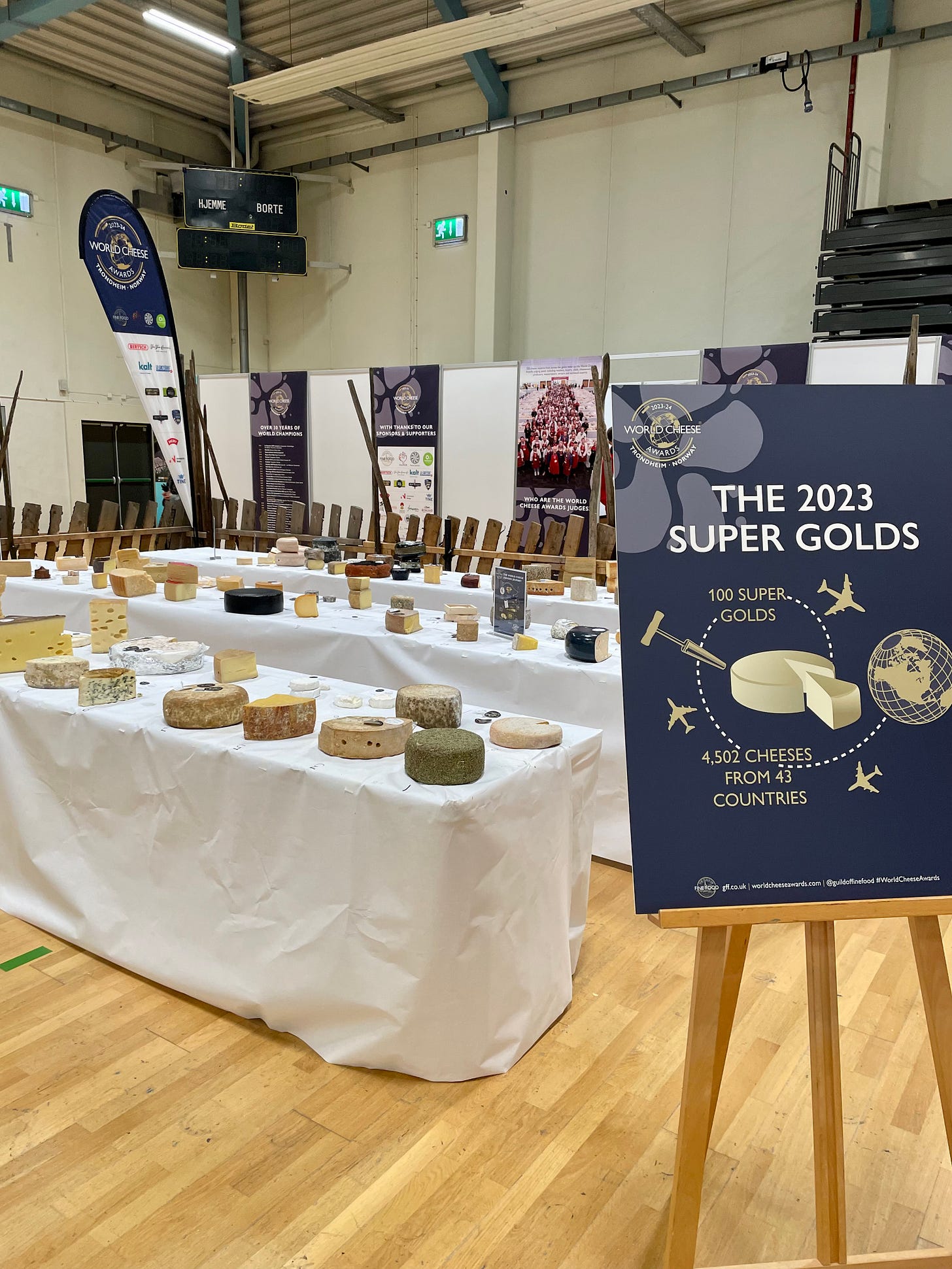Postcards From the World Cheese Awards
A First Timer's Thoughts and Take Aways From One of the Biggest Cheese Events in the World
World Cheese Awards Series, part 1
Welcome to the World Cheese Awards!
This October I had the opportunity to go to the World Cheese Awards in Trondheim, Norway! While I was just a spectator, it was one of the most exciting moments in my cheese career! For two days cheese, cheese enthusiasts, and the rock stars of the cheese world dazzled me. The next series of posts will cover this amazing experience, the things I learned, and the questions I left with.
First, what are the World Cheese Awards? The World Cheese Awards (WCA) is put on by the Guild of Fine Foods, a organization based in the United Kingdom that promotes artisan food and beverage production. The first WCA took place in 1988. At the time, the majority of the cheeses in the competition were from the British Isles— hardly a “world” cheese awards. The 2023/2024 WCA was the 35th edition and had 4,502 cheese entries from 43 countries, judged by 264 judges representing 38 nations. Cheese businesses register and submit their cheeses for consideration. Anyone can enter, with the host country’s import laws and the registrant’s ability to get their cheeses to one of 19 consolidation points around the world the only limiting factors. Once a cheese arrives at one of these Guild-organized consolidation points, the cheeses come to the award venue, which rotates every year. The goal is to deliver all registered cheeses to the venue in the best possible condition. However, cheese is a perishable product, so there are inevitably casualties along the way. Sadly, these lost wheels cannot be judged.
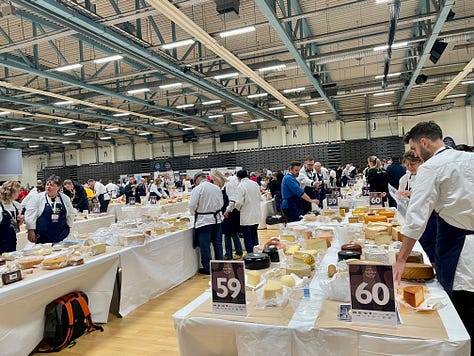
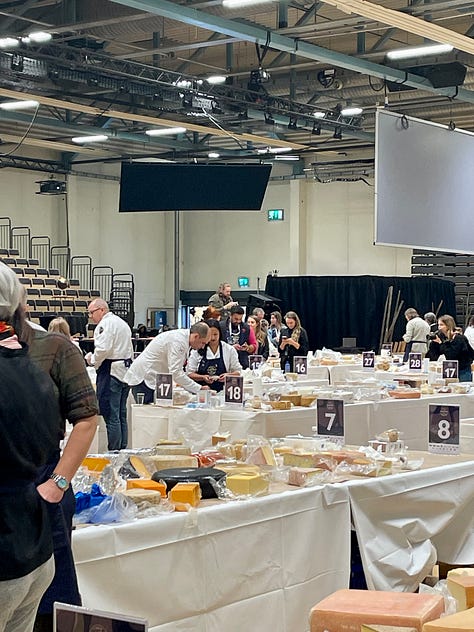
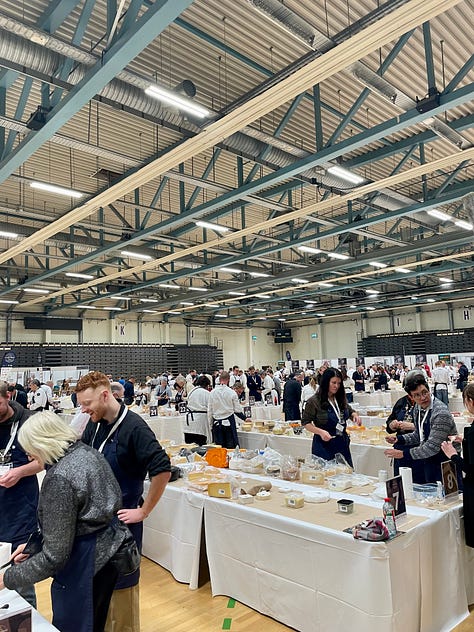
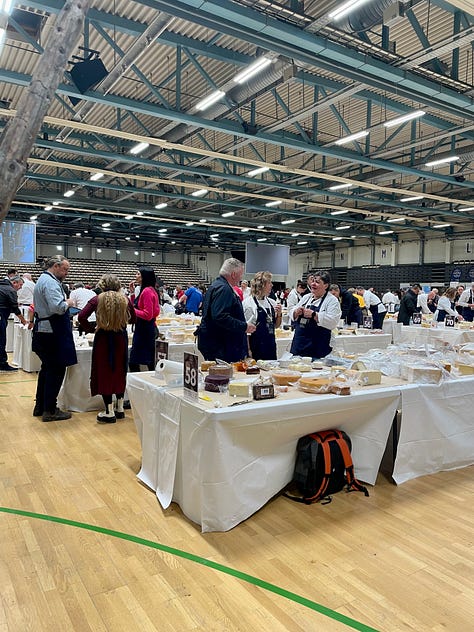
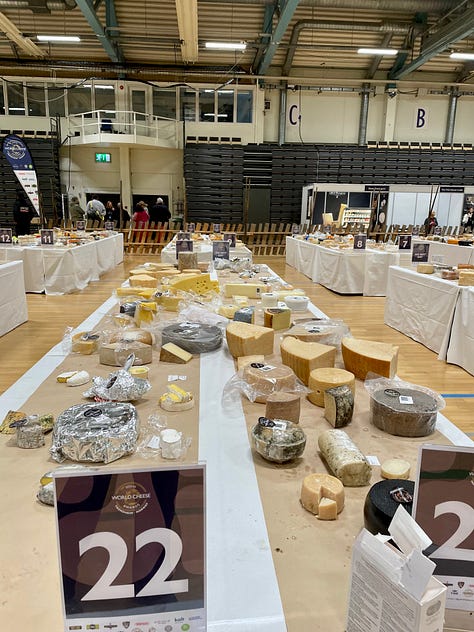
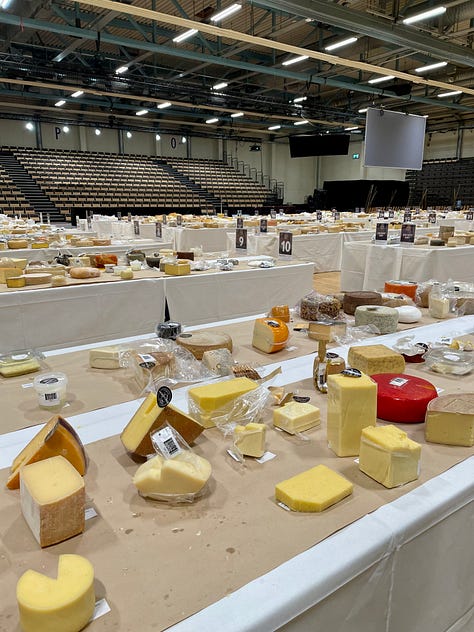
Hooray! The cheeses and judges have made it to this year’s venue. May the judging commence! How does one judge 4,502 cheeses though? The 264 judges come from all sectors of the cheese industry and include cheesemongers, cheesemakers, cheese retailers and wholesalers, affineurs, educators, writers, importers, distributors, and chefs. On 100 long, white tables, WCA organizers arranged approximately 45 cheeses per table. Each table has two, sometimes three, judges assigned to them. The judges spend several hours carefully and meticulously going through the cheeses on their table, rating each one on a 100 point scale based on taste, texture, aroma, flavor, and appearance. They taste, smell, take core samples, or cut wheels in half to fully understand a cheese’s quality. Based on these scores, the judges award bronze, silver, and gold medals. There is no limit to the number of these medals awarded. The judges at each table then choose one cheese to be crowned their table’s super gold!
The 100 super gold semi-finalists now go to the Super Jury: 16 of the top cheese professionals in the world, each representing a different country. These 16 represent the finest minds— and palates —in the world of cheese! The Super Jury goes through the 100 super golds and each judge chooses a finalist. The final judging takes place on stage: each of the assembled judges introduce their fighter and their reason for choosing that cheese followed by all the judges tasting the cheese and giving it a score of one to seven, with one being a flawed cheese and seven being a near perfect cheese. The cheese with the highest score is crowned the World Champion!
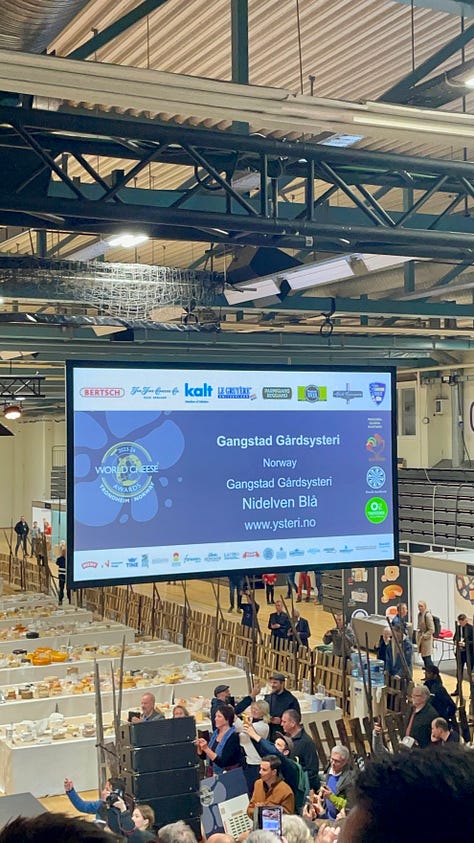

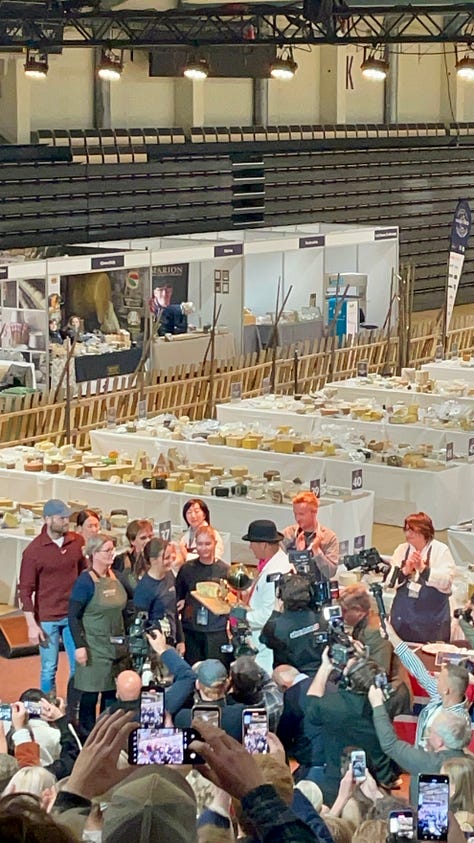
While the competition is the heart of WCA, the veins and arteries that give the WCA life are what’s happening outside the competition arena. Part festival, part trade show, part celebration, it is hard to describe this part of the WCA in one word, but all of it celebrates the craftsmanship and community of artisan cheese. Booths with representatives from an International contingent of cheese businesses spread their passion for their work while pressing samples upon attendees. I saw booths for cheeses from Denmark, France, Germany, Great Britain, Ireland, Italy, Japan, the Netherlands, Spain, Switzerland, Turkey, Ukraine, and, of course, the host country, Norway. The Norwegians set up a section called “Taste of Norway,” a series of cheesemakers offering a glimpse— and taste —of Norwegian cheese history. There was also the World Cheese Marketplace where WCA spectators could purchase cheese-centric refreshments (such as a whole stand dedicated to macaroni and cheese), watch a Norwegian cheese podcast being recorded, or buy cheese directly from local cheesemakers. Finally, the Academy of Cheese puts on the Young Cheesemonger of the Year Award where six cheesemongers under the age of 30 show off their mongering skills (Team USA came in second!)
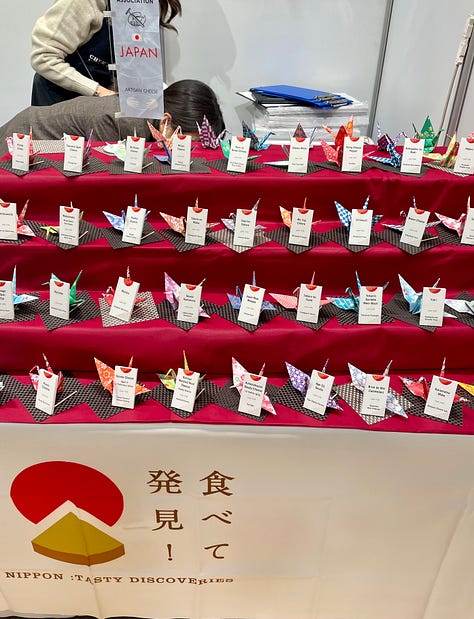
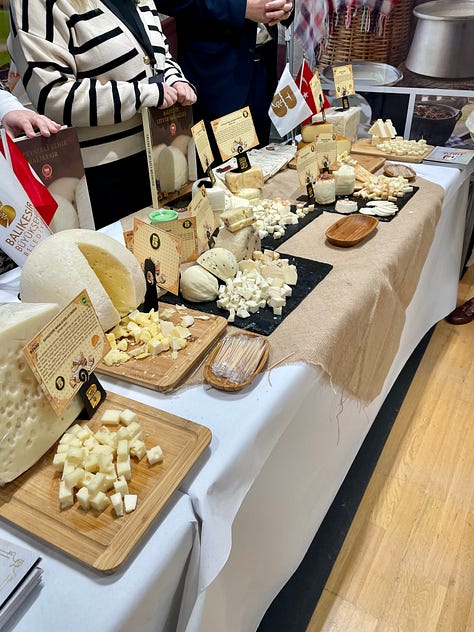

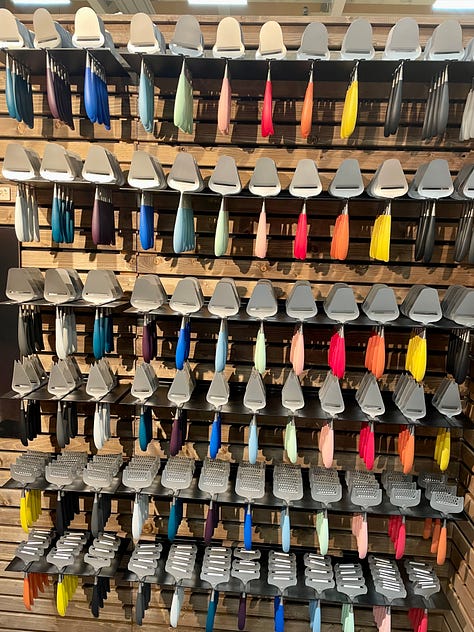
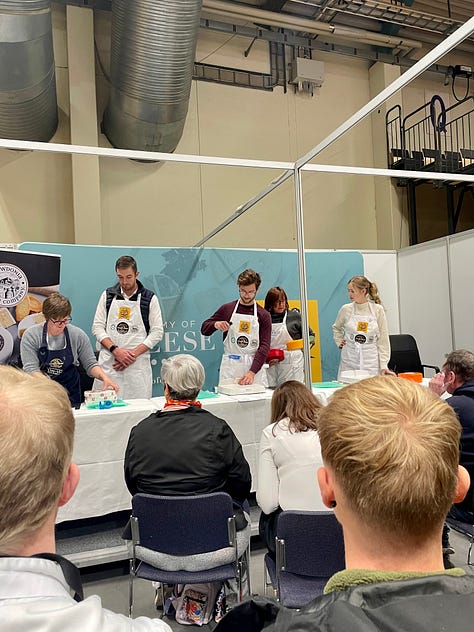
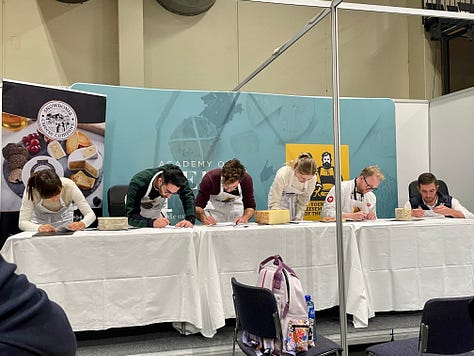
And that was all just the first day! Hopefully this gives you a glimpse into what it is like to attend the World Cheese Awards, and you now have an understanding of how a cheese becomes the World Champion in Cheese. Have a question? Leave a comment! Want to hear more about the World Cheese Awards? Subscribe for more!

